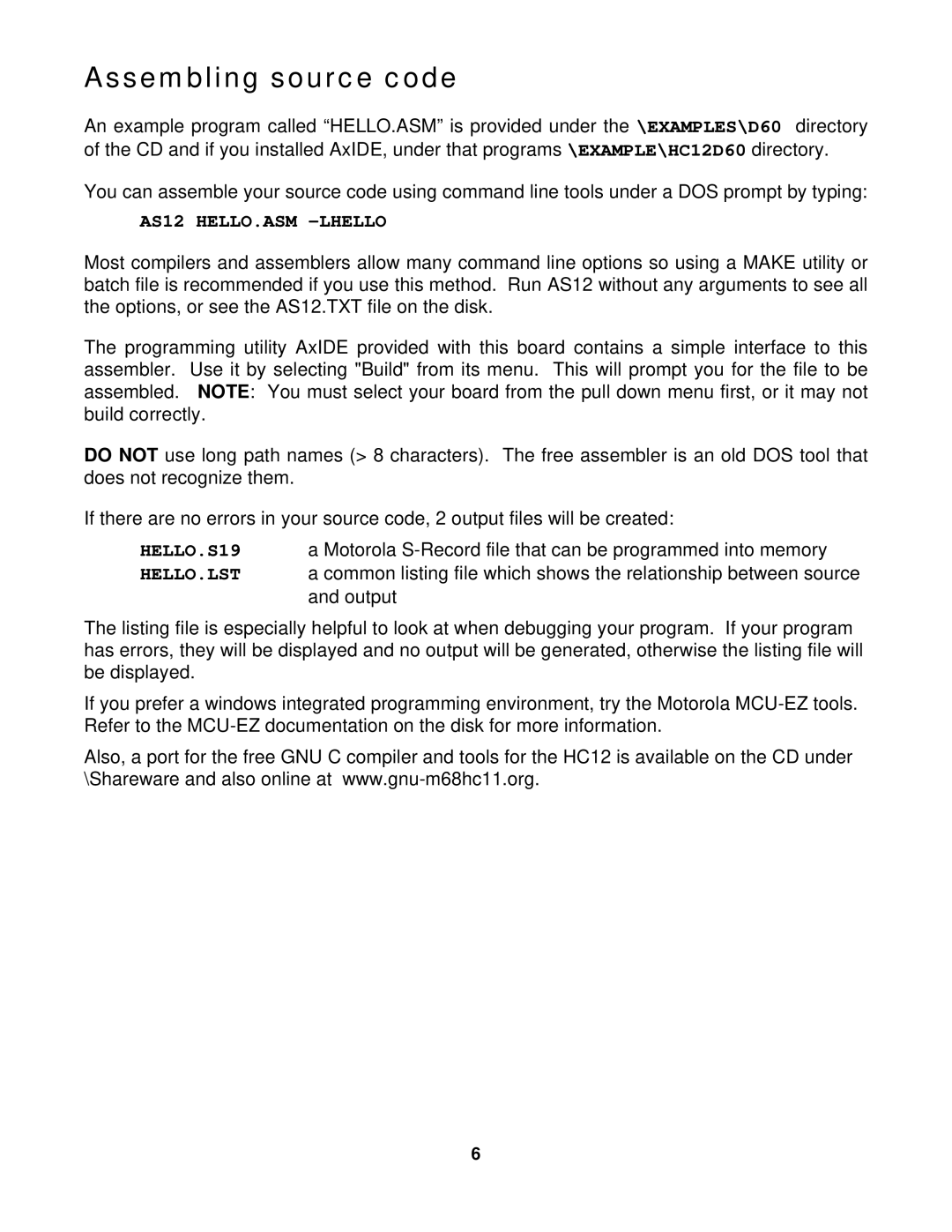Assembling source code
An example program called “HELLO.ASM” is provided under the\EXAMPLES\D60 directory of the CD and if you installed AxIDE, under that programs \EXAMPLE\HC12D60 directory.
You can assemble your source code using command line tools under a DOS prompt by typing:
AS12 HELLO.ASM –LHELLO
Most compilers and assemblers allow many command line options so using a MAKE utility or batch file is recommended if you use this method. Run AS12 without any arguments to see all the options, or see the AS12.TXT file on the disk.
The programming utility AxIDE provided with this board contains a simple interface to this assembler. Use it by selecting "Build" from its menu. This will prompt you for the file to be assembled. NOTE: You must select your board from the pull down menu first, or it may not build correctly.
DO NOT use long path names (> 8 characters). The free assembler is an old DOS tool that does not recognize them.
If there are no errors in your source code, 2 output files will be created:
HELLO.S19 a Motorola
HELLO.LST a common listing file which shows the relationship between source and output
The listing file is especially helpful to look at when debugging your program. If your program has errors, they will be displayed and no output will be generated, otherwise the listing file will be displayed.
If you prefer a windows integrated programming environment, try the Motorola
Also, a port for the free GNU C compiler and tools for the HC12 is available on the CD under \Shareware and also online at
6
